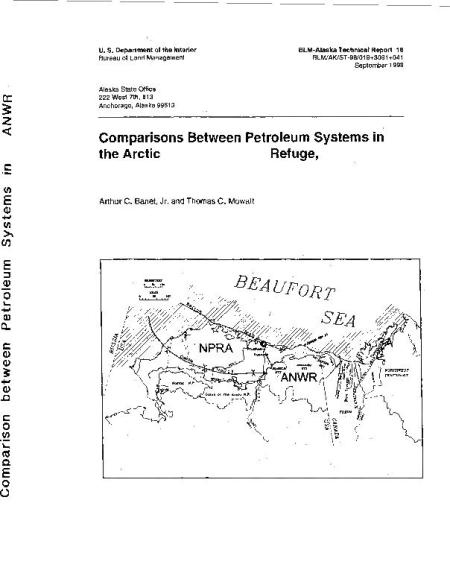Comparisons Between Petroleum Systems in the Arctic National Wildlife Refuge, Alaska

The geology of the Coastal Plain of the Arctic National Wildlife Refuge (ANWR) in northeast Alaska indicates that the area has high potential for the accumulation of oil and gas. Discoveries peripheral to, and oil seeps and stains within the area, suggest three petroleum systems are active.
Oil, condensate and gas are present in lower Paleozoic basement, lower Cretaceous sandstones and upper Cretaceous to Tertiary turbidite sandstones at the Point Thomson Unit immediately west of the Arctic Wildlife Refuge. Available analyses indicate the oil in the Cretaceous sandstones correlates to the oil from the Prudhoe Bay field and peripheral fields. This is the Ellesmerian (!) petroleum system. Kinetic modeling of the large seismically mapped structures beneath the coastal plain suggest either Prudhoe oil or oil from other petroleum systems could successfully charge potential reservoirs.
Two distinctly different oils are found at seeps and stained sandstones on the coastal plain. Upper Cretaceous to Tertiary age turbidites, Miocene age siltstones and a currently active oil seep contain a marine, clastic derived oil. This is the JKM (Jago, Katakturuk, Manning) oil type, derived from upper Cretaceous highly bentonitic shales. It is the Hue-Sagavanirktok (!) petroleum system. Heavily weathered bitumen at the Angun Pt. seep has characteristics similar to marine, Tertiary age oils. This is proposed as the Beaufort (.) system.
